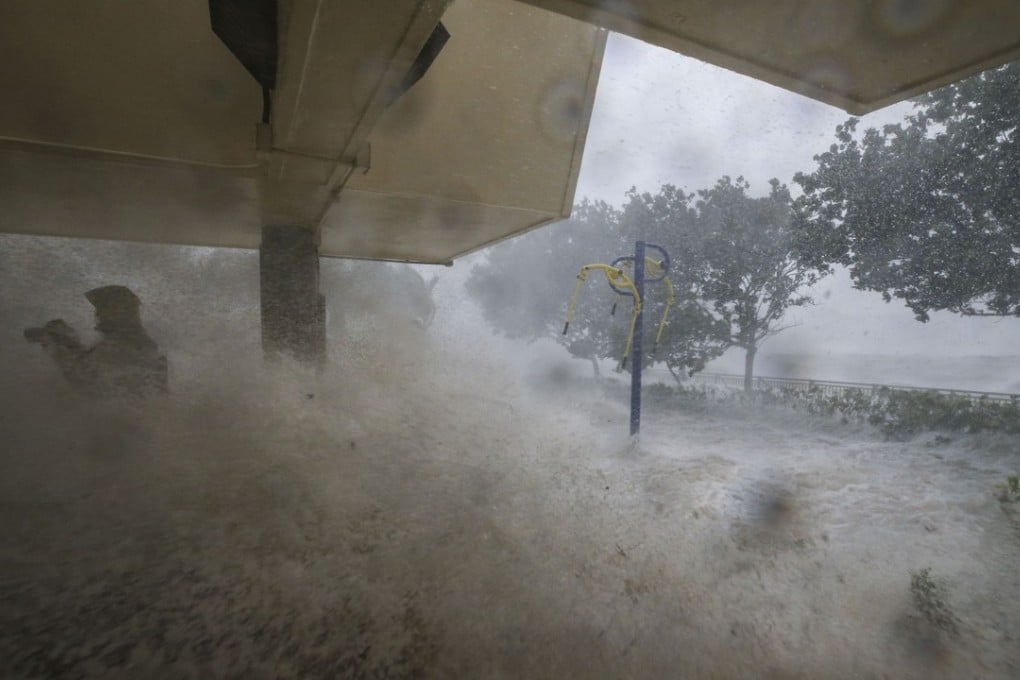Hong Kong begins slow recovery after Typhoon Mangkhut batters city
No 8 warning signal downgraded to No 3 on Monday morning as monster storm no longer a threat to city

Hong Kong managed to avoid serious casualties after a mauling on Sunday by one of the most powerful storms on record to hit the city, but was facing a long and difficult recovery from extensive damage, flooding and travel disruption.
The city’s major bus companies announced on Monday morning they would continue to suspend most of their services, while ferry and rail operators said their services could not resume in full.
Severe Typhoon Mangkhut shut down the city for the entire day, forcing residents to stay indoors for a harrowing 10 hours under a No 10 warning signal, as high-rise buildings swayed, windows shattered, scaffolding was blown off skyscrapers, the lift shaft of a building under construction in Tai Kok Tsui collapsed, and roads were blocked by severe flooding and fallen trees.
Mangkhut, named after the Thai word for mangosteen, was a super typhoon when it triggered the No 8 signal at 1.10am. The storm had weakened slightly into a severe typhoon when the signal was upgraded to No 9 six hours later, and then raised to the highest level at 9.40am as it tore into the city with wind speeds of 175km/h (108mph).
While the city was spared a direct hit, it could not escape the ferocity of Mangkhut.